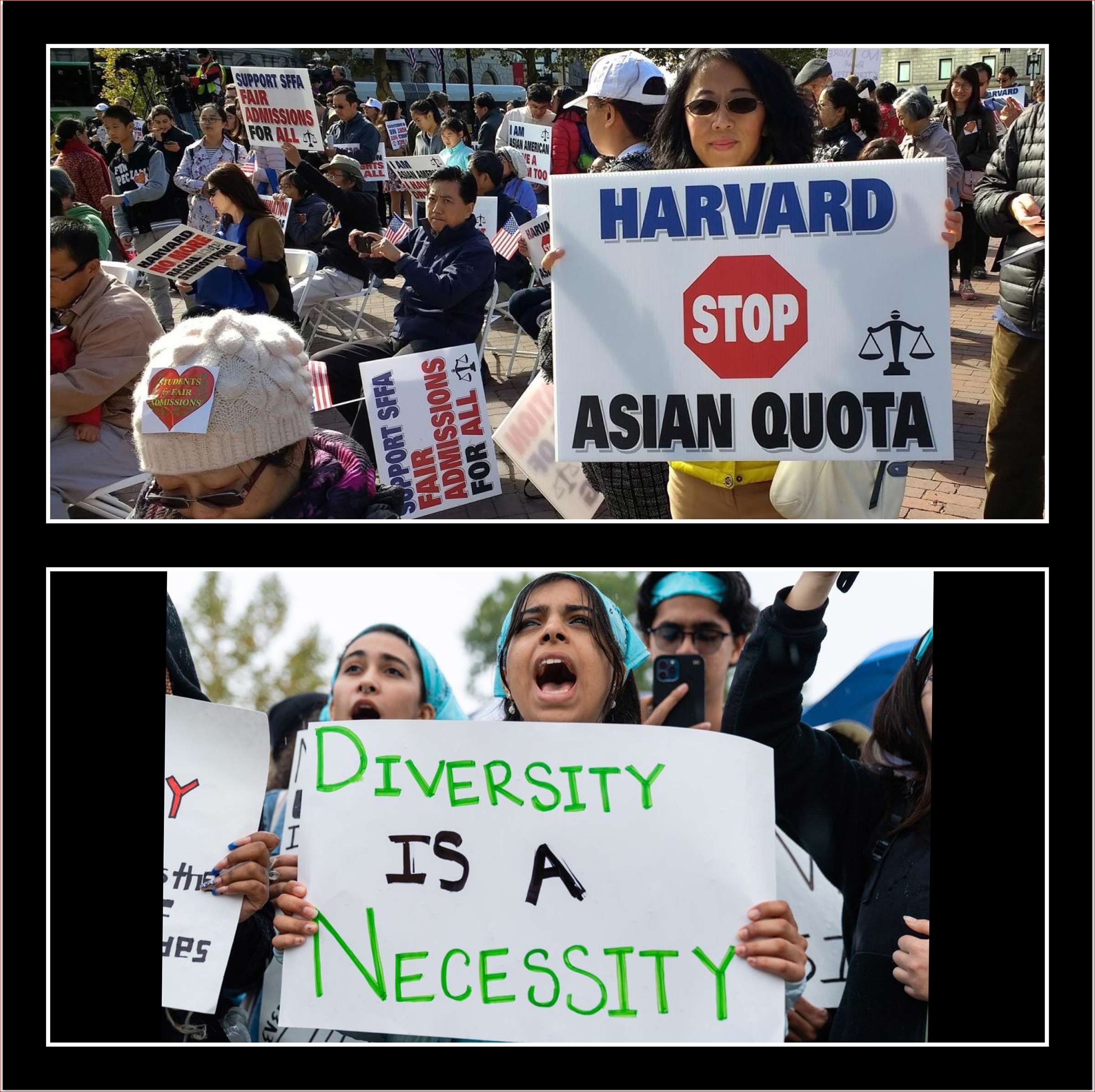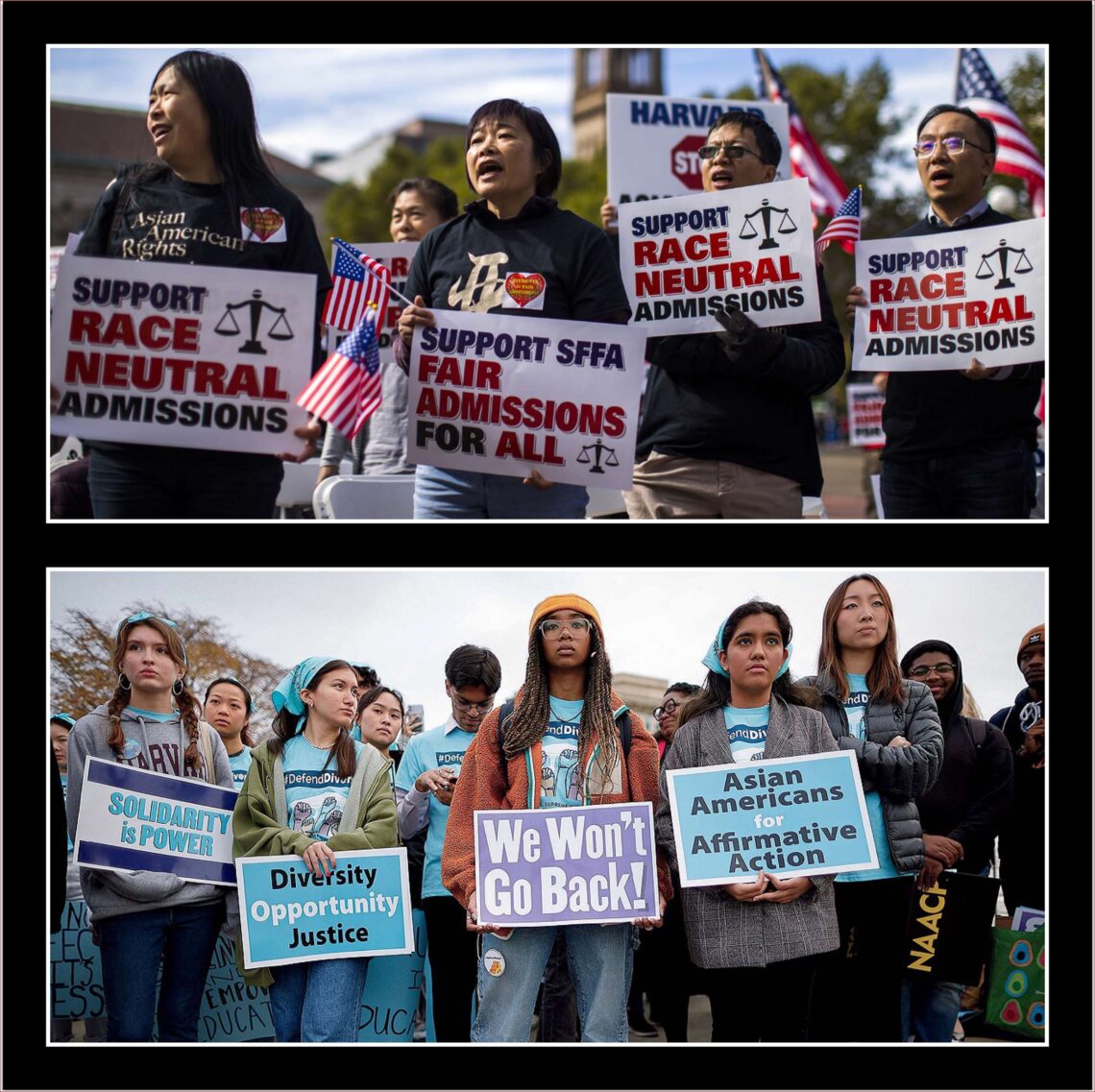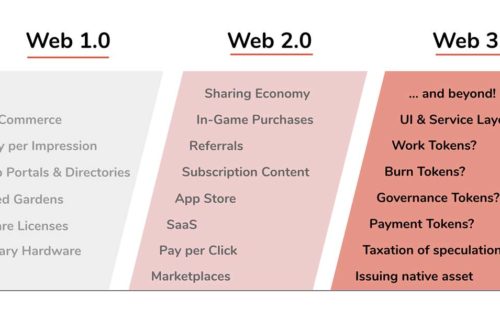A year and a half ago I agonized over the approaching Dobbs v. Jackson decision by the Supreme Court. I had no problem seeing the flimsy legal parapets of Roe v. Wade torn down: that decision had always been highly suspect, with the 14th Amendment stretched beyond recognition and an “unenumerated” right to privacy in that case, which was a pure invention by the Supreme Court back in the 1970s, and as such was rightly decried. But the question of abortion – the decision to abort a fetus or carry it to term; when did “life” begin exactly, and the law regarding this – is endlessly complex, and so I was very torn about giving legislatures in conservative states the wherewithal to do anything they wanted – ie. ban almost all abortions.
One should never tempt the passionate base of a political party with such red meat, in my opinion. Look at the Republican base and abortion. Women should have the option to have an abortion, in my opinion, until some reasonable moment in a pregnancy. I would not give Arkansas, Mississippi, or Texas carte blanche to ban any and all abortions at the earliest stages of pregnancy, or in cases of medical emergency, incest, or rape. It is the same as not giving the states of New York, New Jersey, and California the power to do whatever they want with the 2nd Amendment and gun control.
But if I am ambivalent about Roe v Wade and abortion, I feel no such ambivalence about saying “goodbye” to affirmative action. The Supreme Court decided to take up the issue in two cases, Students for Fair Admissions v. University of North Carolina and Students for Fair Admissions v. Harvard University. The conservative-leaning Supreme Court appeared poised to strike down affirmative action programs in American universities as violating the 14th Amendment’s Equal Protection Clause and associated federal statutes. Good riddance, as far as I am concerned.
Banning the explicit use of race in admissions and government hiring is actually popular politics almost everywhere. Even in my deeply liberal California, we banned affirmative action with Proposition 209 passed by the voters back in 1996. A popular referendum was then held in 2020, by “progressives” who hoped a new Proposition 16 would overturn the earlier Proposition 209 and bring back affirmative action, but in a general vote the California populace voted it down by a clear 57% to 43% margin. In classroom polls my own students have turned down the measure by even larger majorities.
The idea of discriminating to make up for past discrimination has grown long in the tooth fifty years after Justice Lewis Powell and his tortured Regents of the University of California v. Bakke decision, and many rightly see through the charade today. “The way to stop discrimination on the basis of race is to stop discriminating on the basis of race,” Chief Justice John Roberts said back in 2007. Robert was exactly right then, and he was right today. Using racist policies today to remedy the racist policies of the past is wrong. Affirmative action as practiced by Harvard and the University of North Carolina is wrong. It is a violation of the U.S, Constitution’s promise of equality under the law, and so the SCOTUS has ruled. Good for them. End the “sordid business” of “divvying us up by race.”
Affirmative action is much more popular with admissions officers, however, than it is in the general populace. American universities are some of the most liberal places in the entire country, and as institutions they are emotionally and ideologically wedded to the idea. Affirmative action is their baby. There is something about it which makes the issue a hill U.S. colleges seem ready to fight and die on, hostile litigation and public opinion notwithstanding. Places like Harvard and UNC have fought tooth and nail against legal investigations of their admissions practices, and only with a Supreme Court ruling will they be prevented from playing favorites on racial lines. That appeared to be around the corner. I couldn’t wait to see it.
Today it is here. I greet it with satisfaction.
That is why so many top American universities are rebelling against the idea of test scores for entry and the U.S. News & World Report college rankings: they are ideologically committed to the equity of outcomes in making sure that their college classes are sufficiently “diverse,” and they will play games and stack the deck to achieve such an outcome. Using test scores and other indicators of academic merit will get in the way of this indispensable goal of “inclusion and diversity,” so get rid of them. The tests are “racist,” or so the argument goes. Get rid of the standardized tests, or at least greatly diminish their importance. This is highly tendentious reasoning, as anyone of any race can show intellectual prowess on a test, but the end result might be the feared one: certain ethnicities might do better and others less so. “The sad reality of education in America,” said Colin Diver, former dean of the University of Pennsylvania Law School, “is that most of the people with high LSAT scores are white and Asian, not Black and Hispanic. If you’re feeling pressure to score well on rankings, then your admissions office is going to feel the pressure to put the Black and Latino applicant with a low LSAT on the waitlist rather than admit them.” That is why elite schools want to get rid of the test scores and will fail to cooperate with U.S. News & World Report on college rankings. Anything which gets in the way of equity of racial outcome, no matter how well intentioned, is “racist.” If you have to cook the books to get a certain racial outcome, then so be it. This approach is legally suspect, to put it mildly. It might be “reverse discrimination,” but it is still discrimination. Either the law says you can discriminate according to race, or you can’t.
A good chunk of the rest of the country, as well as the Supreme Court, is about ready to say, “No more.”
Good.
I saw how UC Berkeley affirmative action administrator Femi Ogundele cleverly put it, “We are evaluating applicants and looking for excellence, and not perfection.” As an African American, Ogundele was seeking to holistically admit students whose grades and test scores would not otherwise qualify them for UC Berkeley, if you did not go out of your way to take non-academic factors into account. Ogundele would claim that he was looking at poverty or “disadvantage” in holistically evaluating candidates, but make no mistake he is looking primarily at race. An African American himself, Ogundele wants what he wants and that’s why he’s in the job; he will stretch the rules and do what he has to increase African American entries to UC Berkeley. Racial equity is the goal, “systemic racism” is his enemy, and the rules will adjust to reach that goal. In the zero sum game of elite university admissions, this will mean de facto discrimination. “Excellence, not perfection.” A cute phrase. A subjective squishy measure to cook the books around Proposition 209 and achieve a pre-desired outcome.
A few questions. What exactly does that “excellence” look like, when compared to the “perfection” of other candidates, in evaluating who are the strongest applicants, in applying for a select few spots in next year’s freshman class? Is Ogundele playing games? Are his bosses at UC Berkeley complicit in that?
It is this simple: California must have a racial composition in the UC system approaching that of the general population, and all other considerations are secondary, including academic preparation and intellectual distinction, in high school. “Excellence, not perfection.” That is the Party Line at the UC, and elsewhere. They are playing games.
I used to work in the Los Angeles Unified School District, and that place was guilty of educational malpractice, in my opinion, at almost all levels. But the LAUSD gives good grades to most students, even though they score very lowly on state standardized tests. Do grades from public schools in low income areas of metro Los Angeles region reflect significant and real academic accomplishment? How can a college admissions officer accurately gauge an applicant’s academic level? Is an “A” grade at Los Angeles High School very different from an “A” at Irvine High School? Can an admissions officer put any faith in high school GPA by itself as a measure of academic achievement? (After getting rid of test scores, GPA is the only external signifier of academic achievement college can see of applicants in the UC system.) Do high school graduates leave the LAUSD with “As” and “Bs,” but still struggle to read complex texts and do basic math? Are they ready for college-level work? Do UC Berkeley entrance considerations, the “holistic review,” discriminate to a large extent against Asian American students, and to a lesser extent against White students, in the name of “equity and diversity,” towards boosting Latino and Black numbers on campus, in the zero sum game of elite college admissions?
Should college admissions officers in elite universities be playing these complicated games?
Is this why many of these schools are refusing to cooperate with the U.S. News & World Report magazine rankings? These universities don’t like that the results say about how they run their campuses? Especially when it comes to test scores, admittance rates, academic excellence, and race?
I very much suspect so.
Places like Harvard and Stanford have always said, “We will admit who we want according to our ‘Secret Admit Formula’® – trust us! We won’t discriminate.” People knew otherwise. Hence, the litigation which produced today’s SCOTUS decision. That sort of thinking at Harvard and Stanford goes out the door with today’s ruling. Good!
So hurrah for the Supreme Court decision today. Hopefully it will be just the beginning with more litigation in the future. Conception and gestation, and abortion legislation therein, is almost unendingly complicated and difficult. I am humbled by it. Affirmative action is much less so. Good riddance!
P.S. You will note that UC admissions officers playing games to jimmy the racial balance of their freshman class admits are NOT trying to get to the source of the problem. Their primary mission is NOT the Sisyphean task of seeking to transform and improve the K-12 public school system in low income communities around California. They are not going all-in to get Latino, Black, and Native American students to study smarter and achieve more in the schools those students attend, and to cultivate communities of academic excellence there. (That is where the real need lies. That is what would yield real results.) No, they live and work primarily on college campuses. And in their capacity as admissions officers, with the help of university leaders, they are trying to “level the playing field” at the last juncture, that of getting into college, by playing complicated games, called “holistic review.” The whole enterprise is highly suspect. It surprises me not all that it has come under intense judicial scrutiny. Enough.

QUOTES FROM TODAY’S SCOTUS DECISION:
“The Harvard and U.N.C. admissions programs cannot be reconciled with the guarantees of the Equal Protection Clause. Both programs lack sufficiently focused and measurable objectives warranting the use of race, unavoidably employ race in a negative manner, involve racial stereotyping and lack meaningful end points. We have never permitted admissions programs to work in that way, and we will not do so today…
“…Nothing in this opinion should be construed as prohibiting universities from considering an applicant’s discussion of how race affected his or her life, be it through discrimination, inspiration or otherwise. But, despite the dissent’s assertion to the contrary, universities may not simply establish through application essays or other means the regime we hold unlawful today.”
Chief Justice John Robert
“The solution to our Nation’s racial problems thus cannot come from policies grounded in affirmative action or some other conception of equity. Racialism simply cannot be undone by different or more racialism. Instead, the solution announced in the second founding is incorporated in our Constitution: that we are all equal, and should be treated equally before the law without regard to our race. Only that promise can allow us to look past our differing skin colors and identities and see each other for what we truly are: individuals with unique thoughts, perspectives, and goals, but with equal dignity and equal rights under the law.”
Justice Clarence Thomas
“Today, this Court stands in the way and rolls back decades of precedent and momentous progress. It holds that race can no longer be used in a limited way in college admissions to achieve such critical benefits. In so holding, the Court cements a superficial rule of colorblindness as a constitutional principle in an endemically segregated society where race has always mattered and continues to matter. The Court subverts the constitutional guarantee of equal protection by further entrenching racial inequality in education, the very foundation of our democratic government and pluralistic society.”
Justice Sonia Sotomayor
“According to SFFA’s expert, over 80% of all black applicants in the top academic decile were admitted to UNC, while under 70% of white and Asian applicants in that decile were admitted. In the second highest academic decile, the disparity is even starker: 83% of black applicants were admitted, while 58% of white applicants and 47% of Asian applicants were admitted. And in the third highest decile, 77% of black applicants were admitted, compared to 48% of white applicants and 34% of Asian applicants.”
Chief Justice John Roberts
“Even when the majority’s ad hoc statistical analysis is taken at face value, it hardly supports what the majority wishes to intimate: that Black students are being admitted based on UNC’s myopic focus on ‘race—and race alone.’ As the District Court observed, if these Black students “were largely defined in the admissions process by their race, one would expect to find that every” such student “demonstrating academic excellence . . . would be admitted…
“…The Court has come to rest on the bottom-line conclusion that racial diversity in higher education is only worth potentially preserving insofar as it might be needed to prepare Black Americans and other underrepresented minorities for success in the bunker, not the boardroom (a particularly awkward place to land, in light of the history the majority opts to ignore). It would be deeply unfortunate if the Equal Protection Clause actually demanded this perverse, a historical, and counterproductive outcome. To impose this result in that Clause’s name when it requires no such thing, and to thereby obstruct our collective progress toward the full realization of the Clause’s promise, is truly a tragedy for us all.”
Justice Ketanji Brown Jackson
“Most troubling of all is what the dissent must make these omissions to defend: a judiciary that picks winners and losers based on the color of their skin. While the dissent would certainly not permit university programs that discriminated against black and Latino applicants, it is perfectly willing to let the programs here continue. In its view, this Court is supposed to tell state actors when they have picked the right races to benefit.”
Chief Justice John Roberts
“Notwithstanding this Court’s actions, however, society’s progress toward equality cannot be permanently halted. Diversity is now a fundamental American value, housed in our varied and multicultural American community that only continues to grow. The pursuit of racial diversity will go on. Although the Court has stripped out almost all uses of race in college admissions, universities can and should continue to use all available tools to meet society’s needs for diversity in education. Despite the Court’s unjustified exercise of power, the opinion today will serve only to highlight the Court’s own impotence in the face of an America whose cries for equality resound.”
Justice Sonia Sotomayor






7 Comments
Sean
What comes next, Rich? Not merit-based university admissions. Instead, we’ll see the opposite in a post-affirmative action America.
Bolshevik madrassas masquerading as universities in the United States will eliminate admissions criteria that highlight differences in intelligence and ability — GPA, test scores, and academic achievements will no longer be evaluated.
Universities will claim a new, holistic approach to applicant evaluation so they can discriminate based on identity, but without obvious academic comparisons that make it easy to prove they’re discriminating against qualified candidates because of their race. Eliminate objective academic criteria like grades and test scores, and you eliminate the easiest way to discern whether someone who is otherwise qualified is being discriminated against because of his or her race or identity.
The goal of the modern university is not education of the nation’s best and brightest. The goal is indoctrination and credentialing. The corrupt university cartel is not going to suddenly do a 180 on its obvious goals because of a pesky court decisions telling it to stop being racist. They’re going to be even more race- and identity-obsessed going forward, but now they’ll start trying to hide it better.
rjgeib
I dunno. The vast majority of American colleges accept pretty much everyone who applies, so today’s Supreme Court decision is not relevant to most applicants. We are talking about a small number of selective universities, so it is easy to make this into a bigger deal than it is. (It affects mostly politicians, journalists, activists — the loud people. So there is much noise.) Nonetheless, those “elite schools” and their admissions offices will now be under much more intensive scrutiny as to the games they play with race and identity. That is good.
Harvard University can start slicing off a cut of their 51 billion dollar endowment each year to budget for their legal bills emanating from their admissions office; and they still probably will lose those court cases, according to today’s SCOTUS ruling. Good.
Conor
The merits of today’s SCOTUS decision aside (I haven’t read it yet), how strange that the faction that argues institutions of higher education are white supremacist *wants* their admissions officers to have discretion to discriminate on the basis of race.
rjgeib
The admissions officers are playing games. The Supreme Court made that more difficult today. Good for SCOTUS.
George
Grade inflation, sometimes called “equity grading,” and “social promotions,” which combat meritocracy as a residue of “white supremacy,” leave a wake of wreckage in the California public schools. “Ethnic studies” and “antiracism” curricula are trendy in progressive areas but are also harbingers of academic struggle, and even failure. Honors classes are seen as “elitist” and frowned upon, or worse. Injections of partisan political pressure have ruined California public schools. “According to World Population Review,” Larry Sand claimed, “California now leads the country in illiteracy. In fact, 23.1% of Californians over age 15 cannot read this sentence.” Especially after the pandemic, things have never been worse in our public schools. The first thing we should do is get rid of teacher’s unions.
rjgeib
That is too sweeping a judgment. The strong public schools here in California are pretty much as good today as they always were. The bad ones are worse, post-pandemic, but they were not good before. I would not hold my breath for that to be fixed in California or anywhere else. And no teacher bashing, please. Do you think people like me make policy?
Bruce
To all those criticizing the recent Supreme Court decision on affirmative action: It is now up to you to fix the real problems in education. Force out bad administrators and educators. Demand the unions join you in this effort. Support intact families.
Prove by actions, instead of empty words, that the success of all children really is the goal. Do this and you will no longer have to use race to cover for your failures and inaction, as more of those students will qualify over time for acceptance on merit.